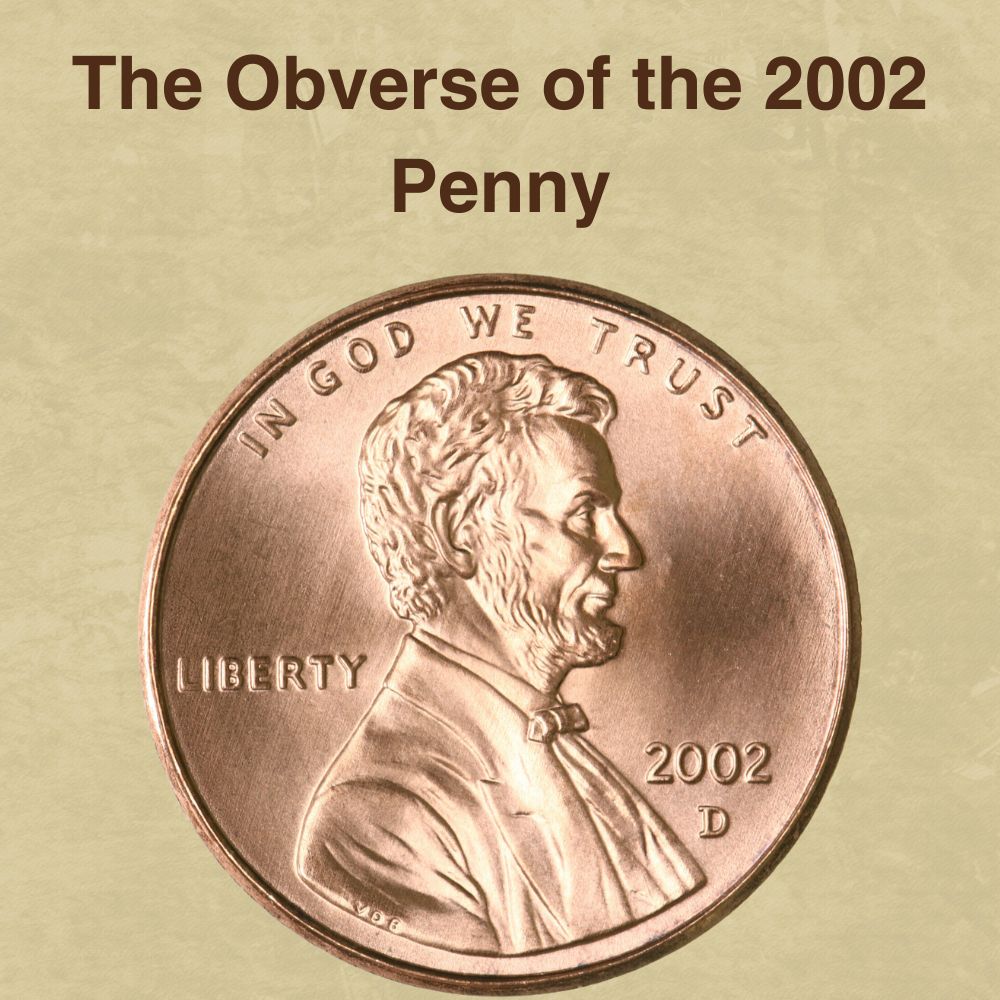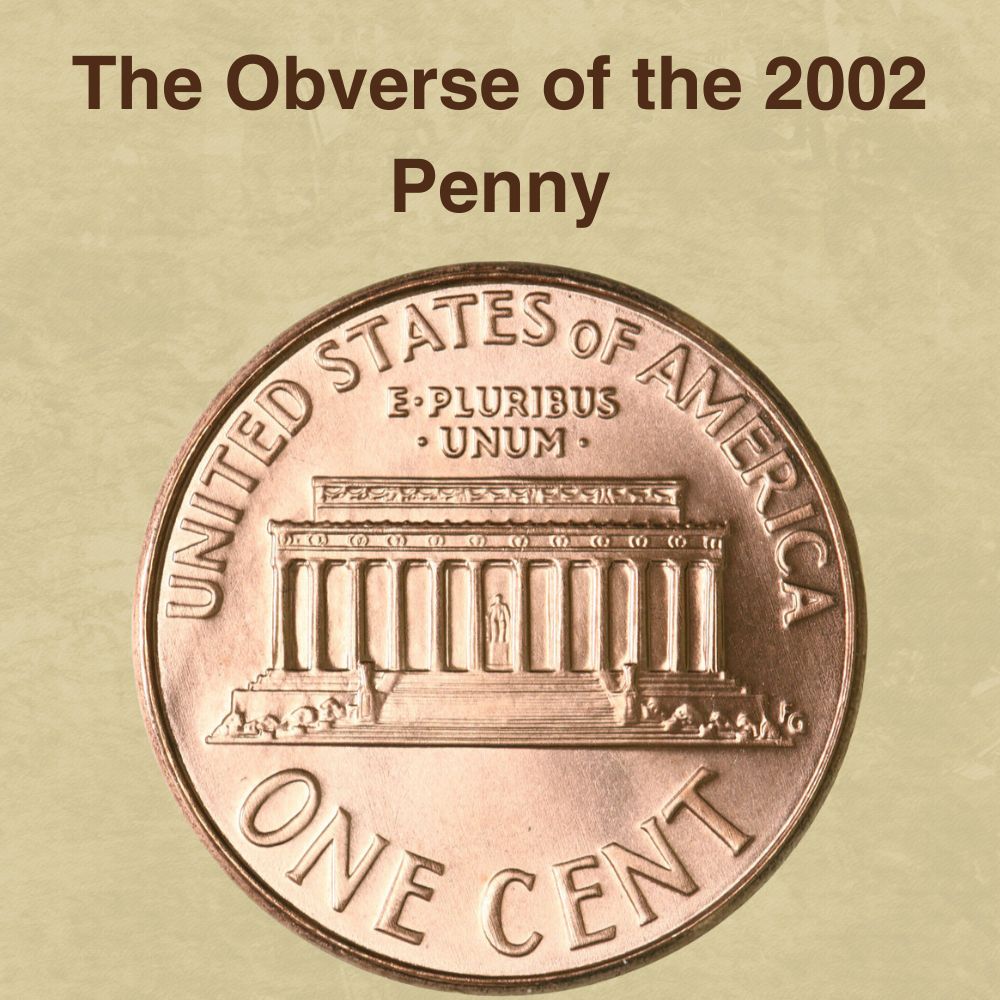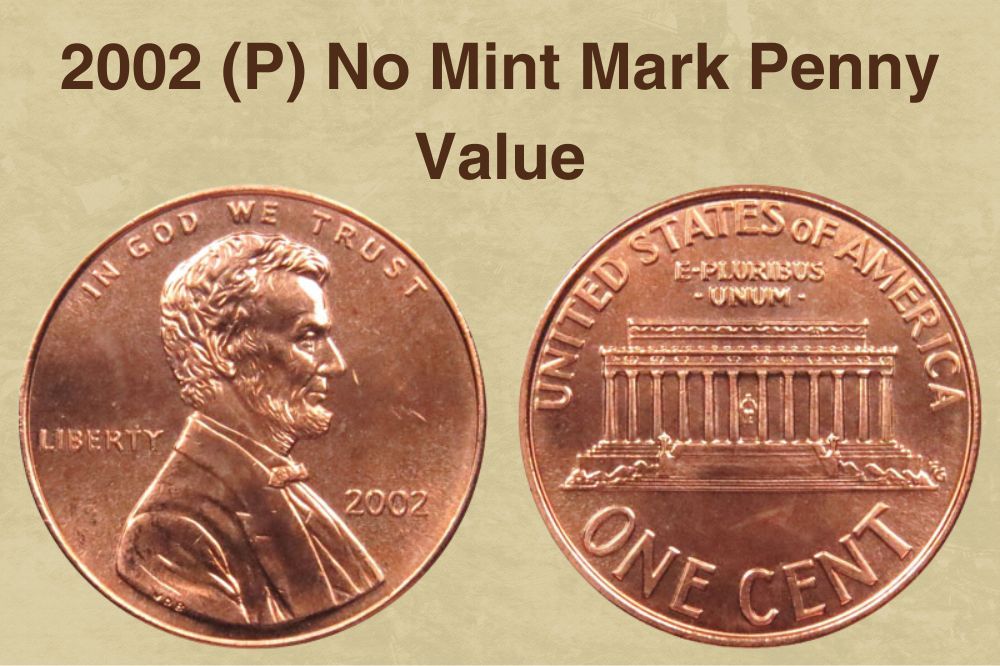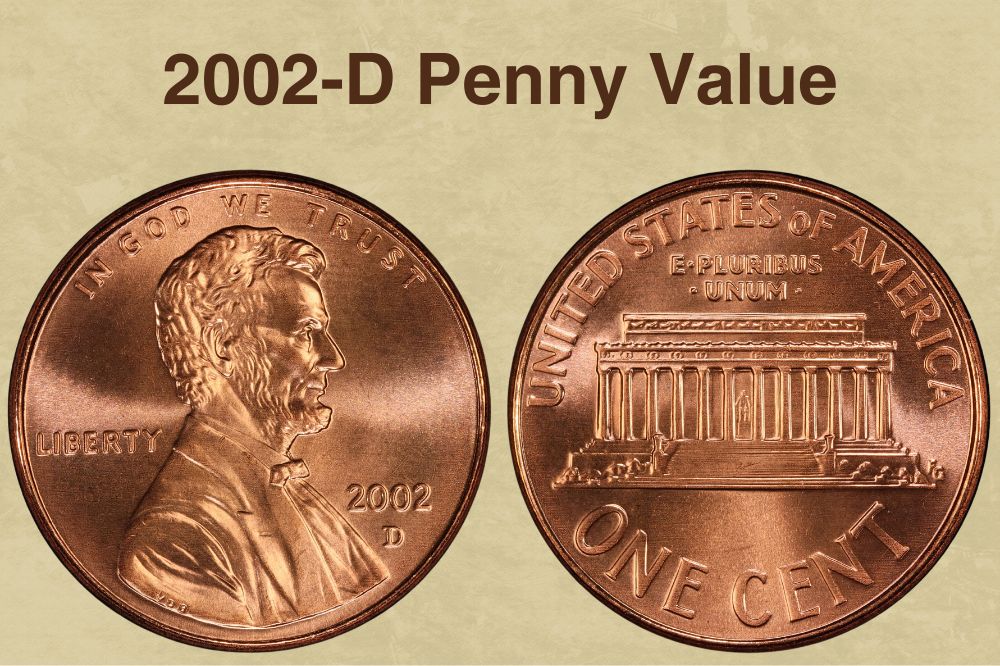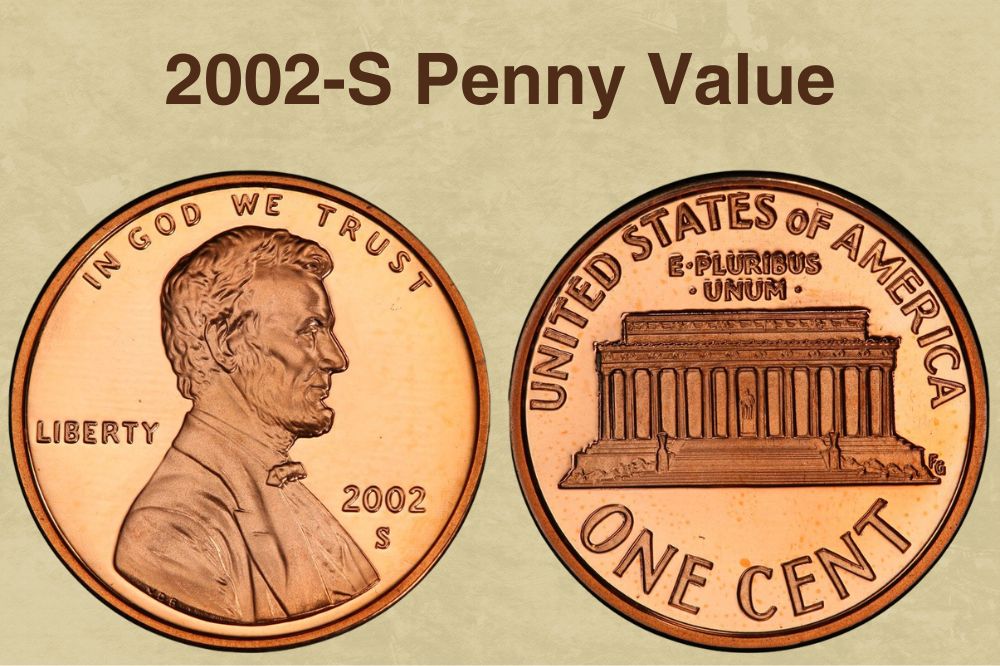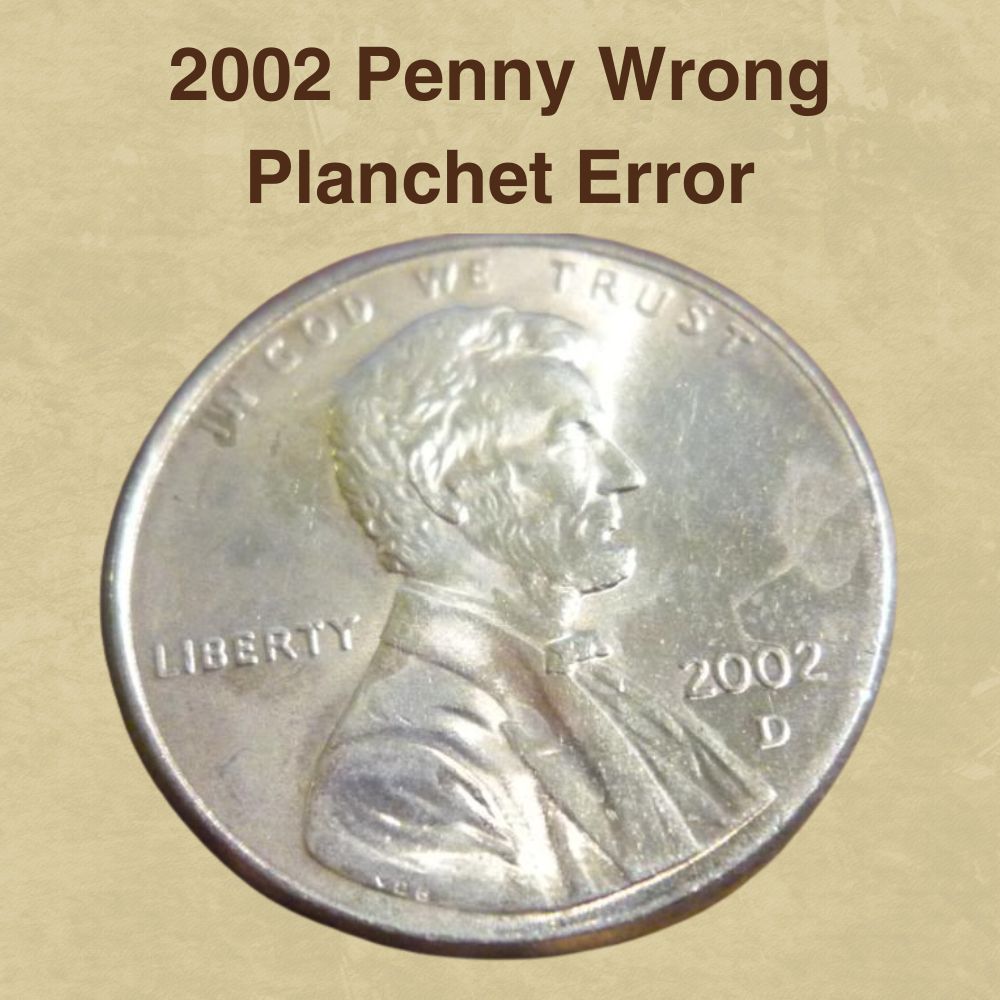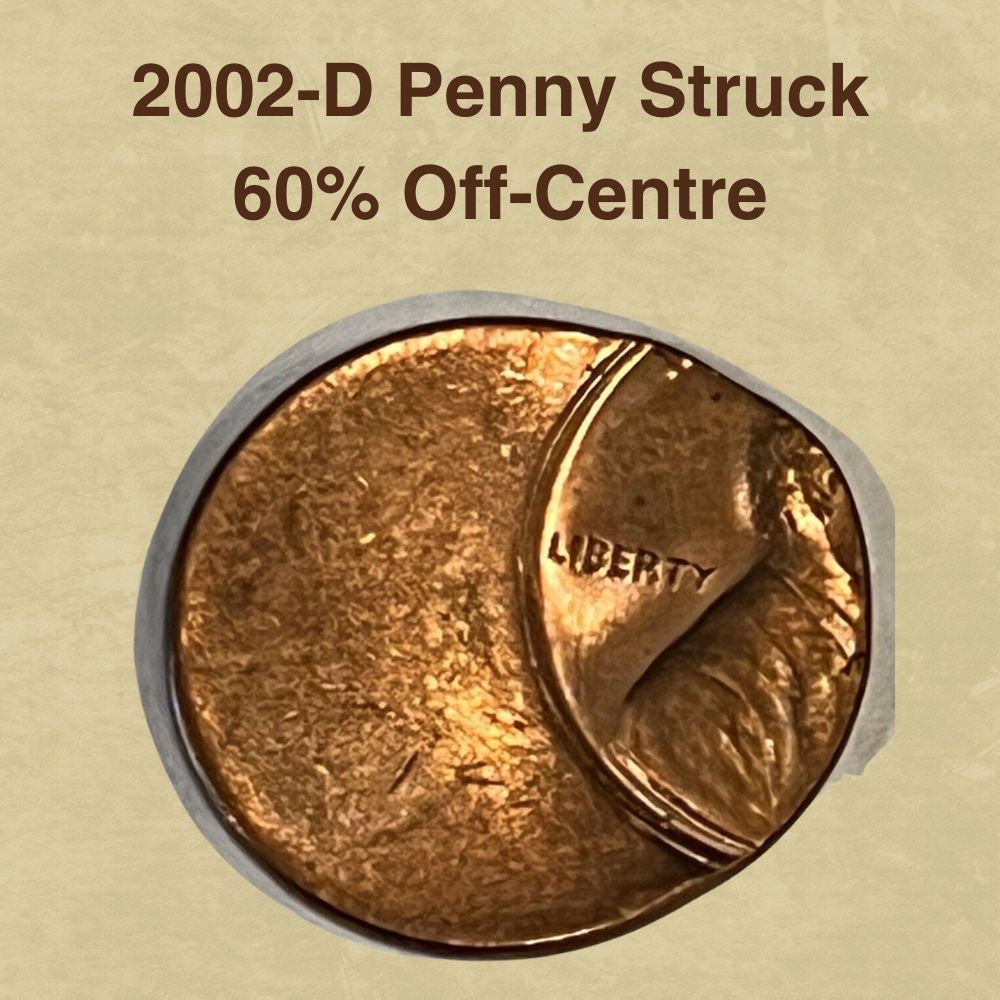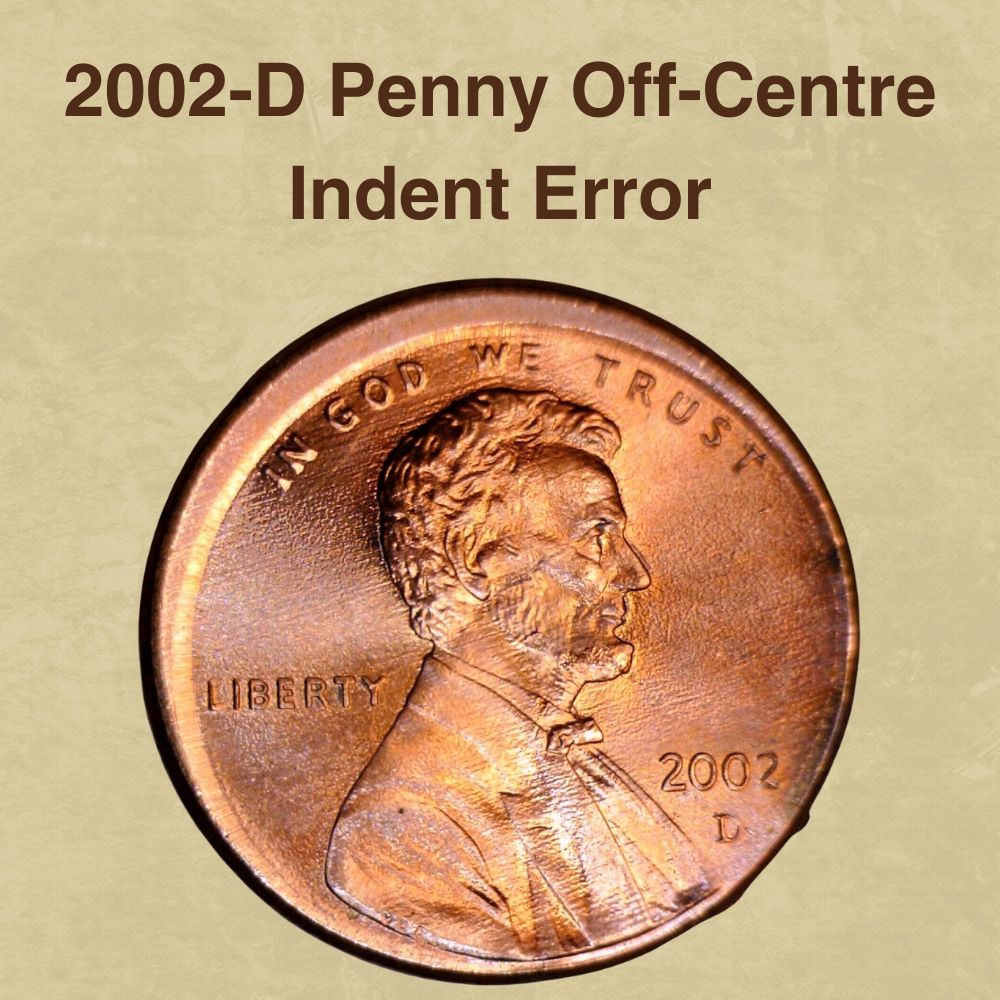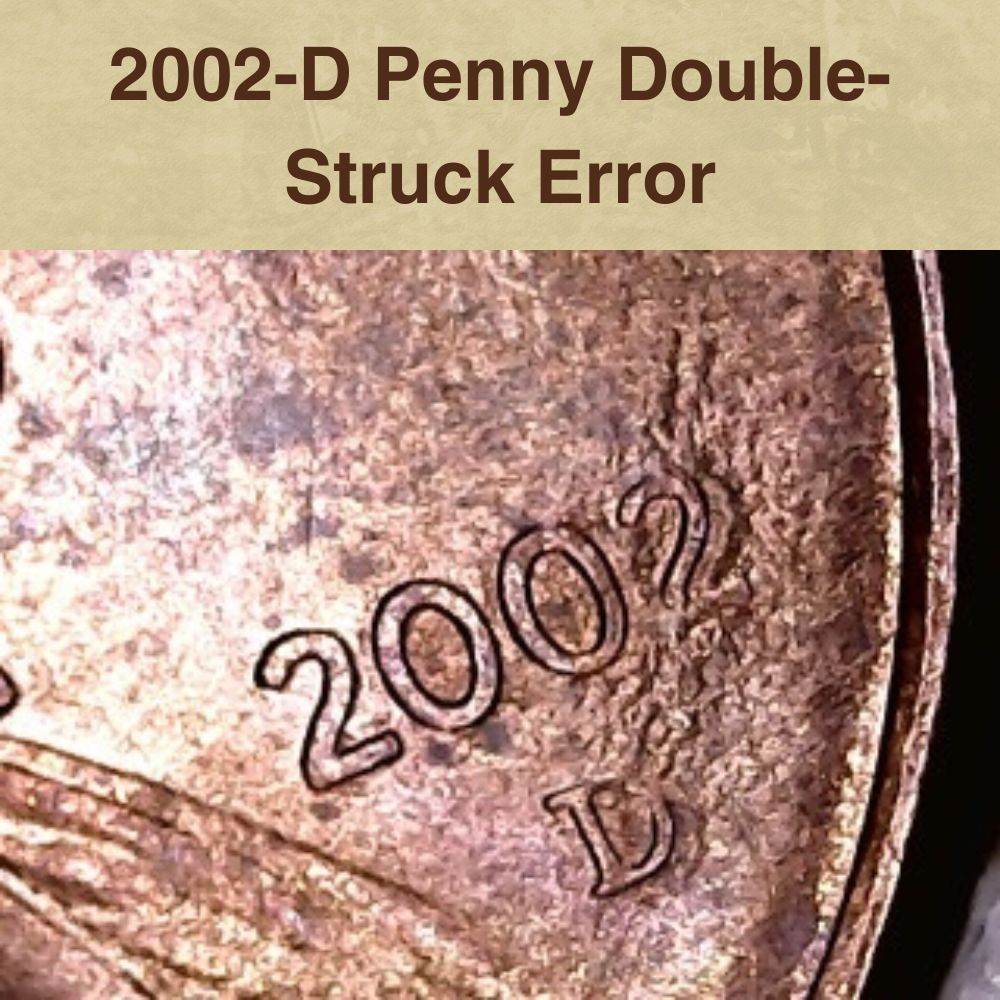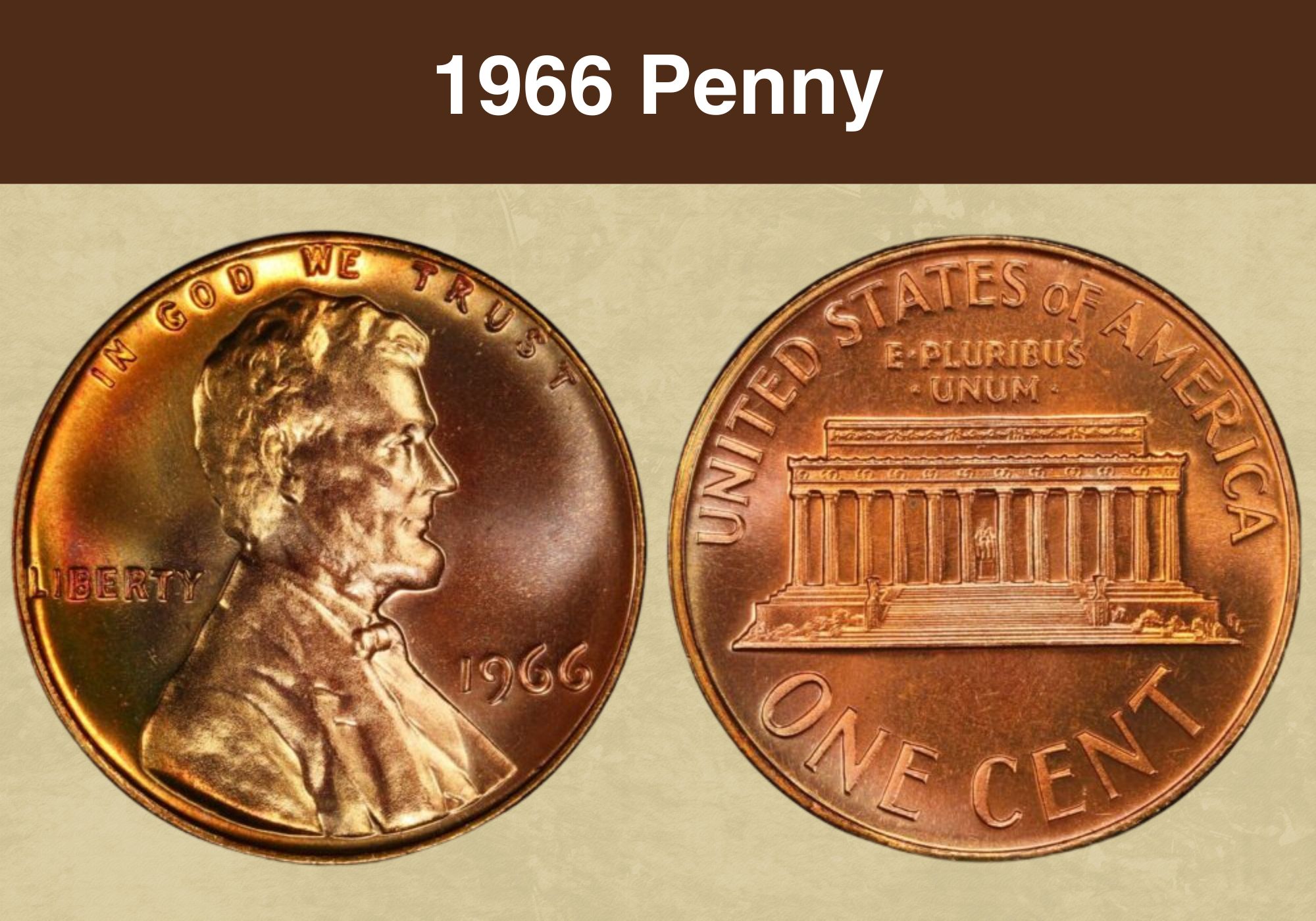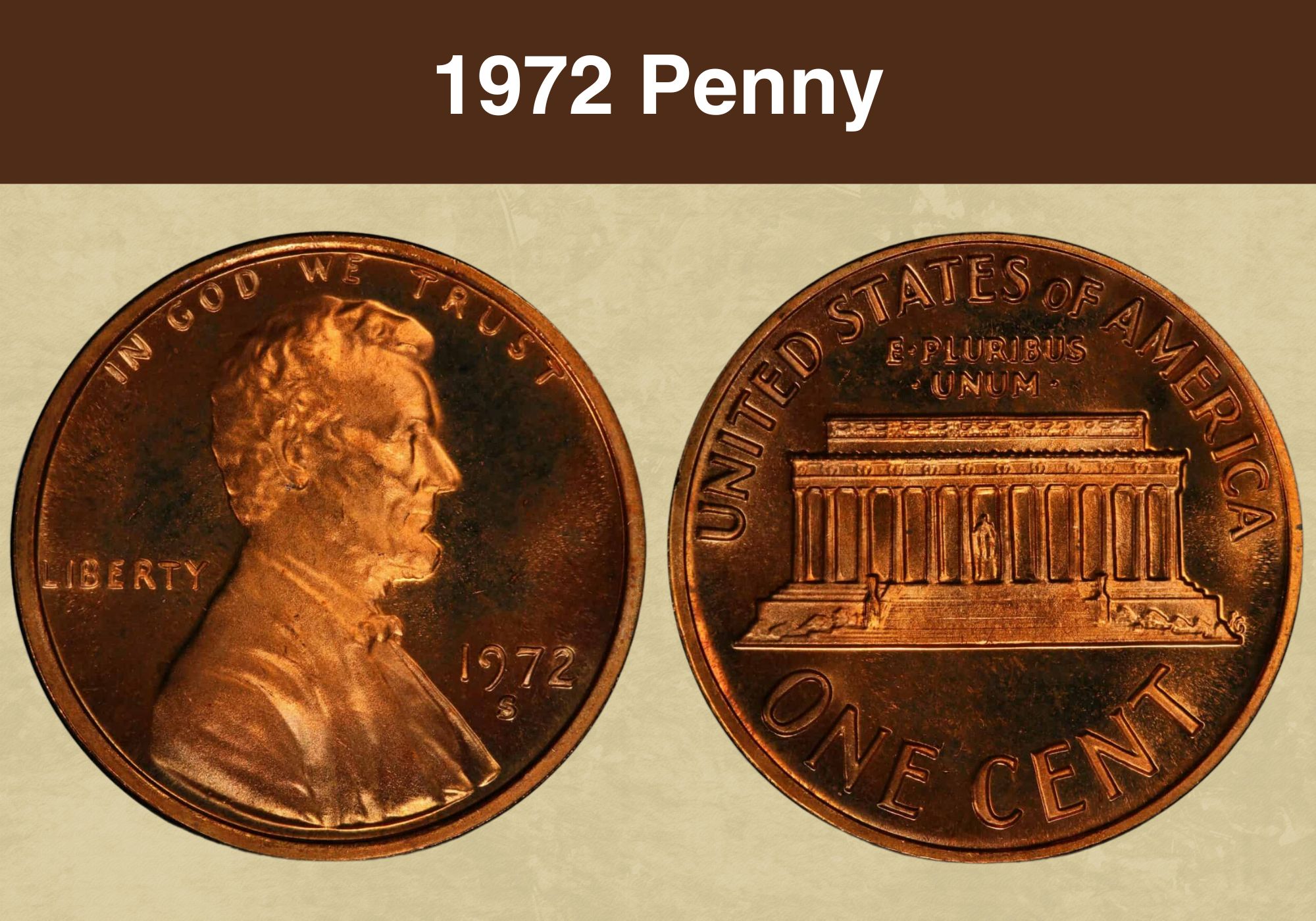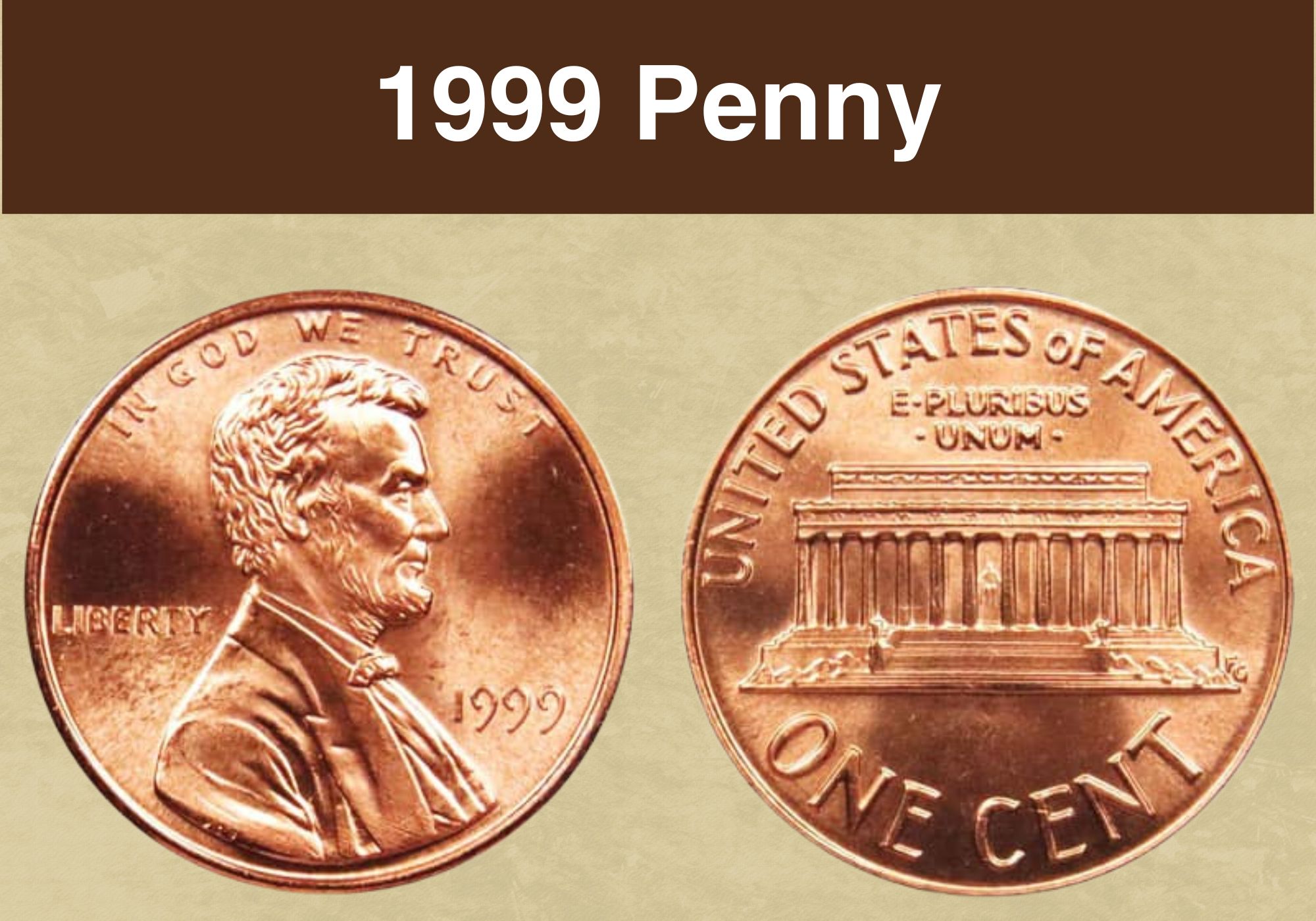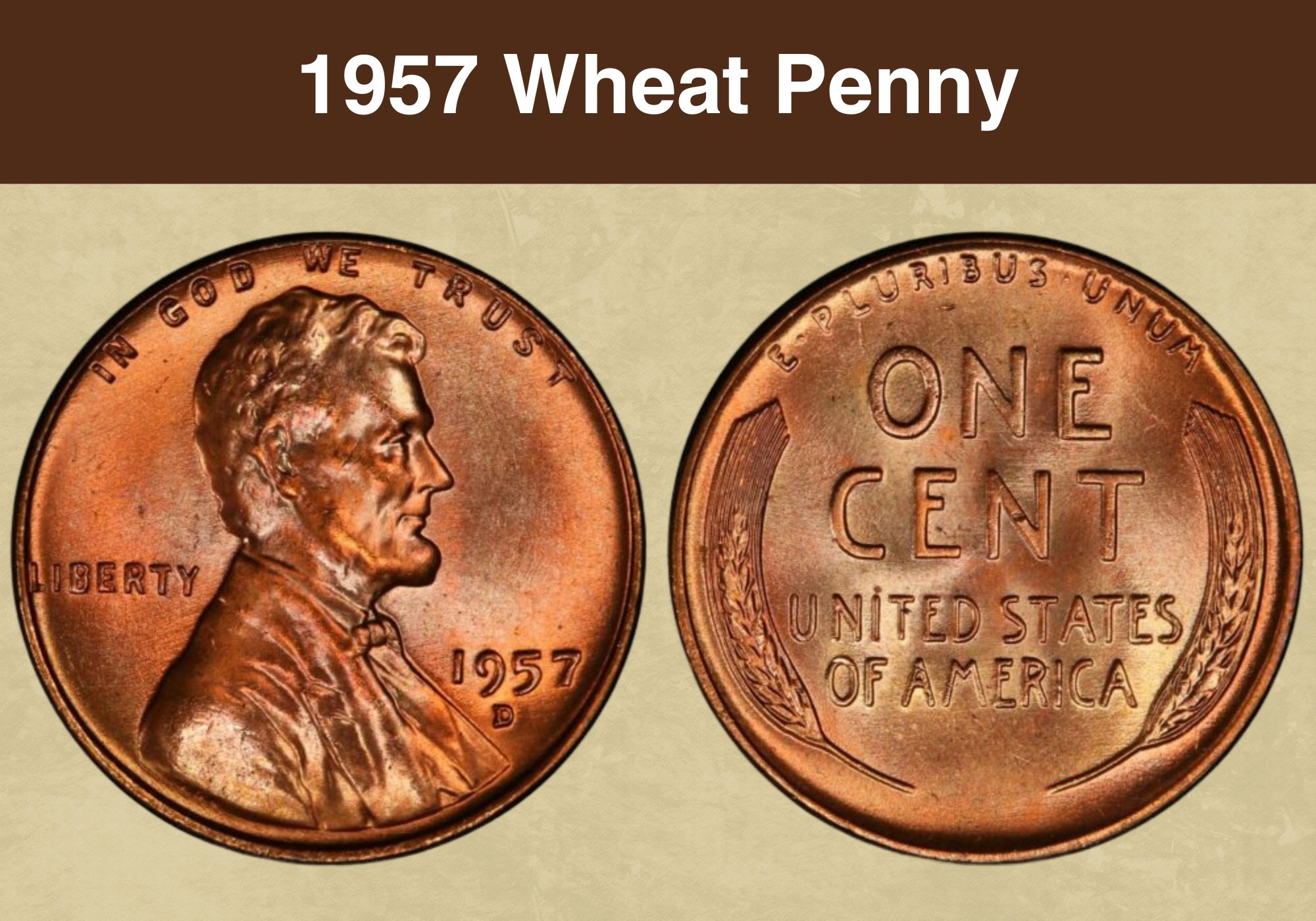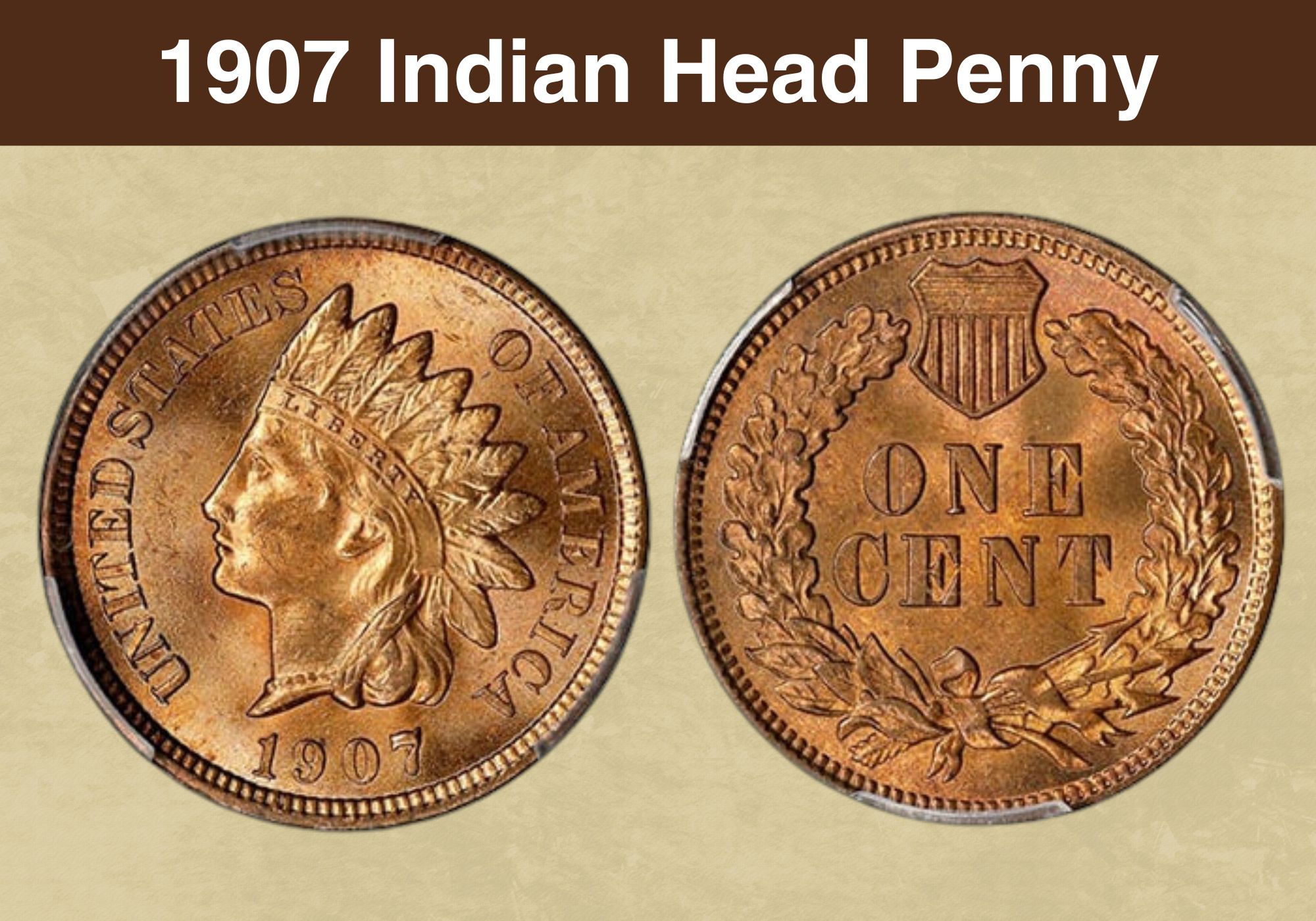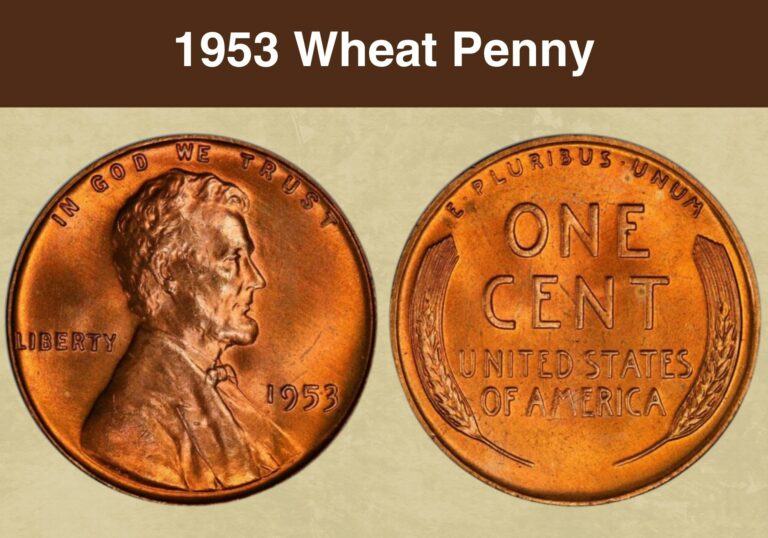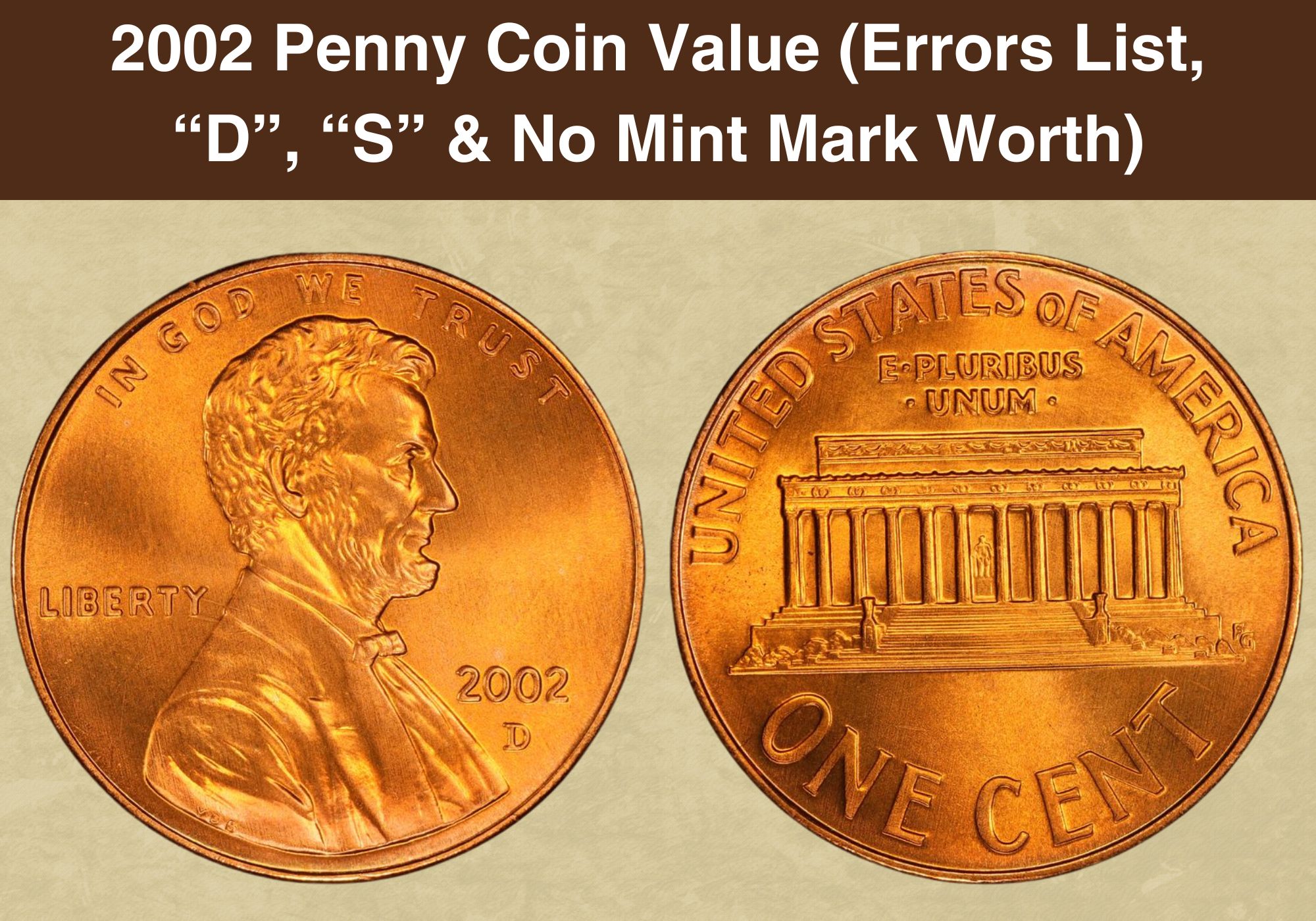
Coin Value Contents Table
While it’s more than two decades old, the 2002 Penny is typically classified as a modern coin. This means you can easily find it in high grades, which lowers its price as a collectible. But it still draws interest from numismatists around the world (people who collect, study, and trade in coins, tokens, paper money, etc.). Let’s explore the 2002 Penny Value in the current market.
2002 Penny Value Chart |
|||||
| Coin | MS 66 RD | MS 67 RD | MS 68 RD | MS 69 RD | PR 70 DCAM |
| 2002 (P) No Mint Mark Penny | $14 | $20 | $32 | $175 | – |
| 2002-D Penny | $14 | $16 | $32 | $140 | – |
| 2002-S Penny | – | – | – | – | $54 |
History of the 2002 Penny
The 2002 Penny is a Memorial Penny, meaning its tails side – technically known as its reverse – shows the Lincoln Memorial Building. This design began in 1959 to mark the 150th anniversary of Abraham Lincoln’s birth (aka the sesquicentennial). It continued until 2008 when four new designs were introduced to mark 200 years since his birth (aka bicentennial).
While we refer to these coins as pennies, they’re 1-cent coins based on the decimal system we use in the US. But as a former British colony, we still call them pennies, just like they do in the UK. And while American pennies were initially pure copper, they were variously reduced to 88% copper in 1856, 95% copper in 1864, zinc-and-steel in 1943, and 2.5% copper in 1982.
Early on, US coins didn’t have presidents on them because the practice was favored by the monarchy. So while a few commemorative coins were previously minted, the 1c was the first circulating coin with a president on it. Abraham Lincoln was chosen because he was – and still is – one of our most popular leaders. February 1909 marked 100 years after he was born.
Features of the 2002 Penny
In the coin world, the heads or front side of a coin is called its obverse while the back or tails side is the reverse and the thin side is the edge. The edge sometimes has ridges called reeds, and it often has a raised border called a rim or collar. The images on a coin are called devices while the words are mottos or legends. The blank disc that makes a coin is called a planchet.
The Obverse of the 2002 Penny
The obverse of the 2002 Penny shows the profile of Abraham Lincoln, the 16th US President. The motto In God We Trust is above his head while the legend Liberty is behind his neck. The mint date is in front of his chest with the mint mark below the date. The initials VDB are on his shoulder cut-off, identifying the coin’s designer, Victor David Brenner. It has no reeds.
The Reverse of the 2002 Penny
The reverse of the 2002 Penny shows the Lincoln Memorial Building. You can see a statue of Lincoln through the central pillars. The top of the coin says United States of America with E Pluribus Unum directly below it. The bottom of the coin shows its denomination, One Cent. On the corner of the steps, the initials FG identify the reverse designer as Frank Gasparro.
Other Features of the 2002 Penny
The 2002 Penny is 97.5% zinc topped with 2.5% copper to mimic its original appearance from 1909. The coin is 2.5g, 19.05mm across, and has a smooth or plain edge without reeds. It was minted in Philadelphia (No Mint Mark) and Denver (D Mint Mark) with the proofs minted in San Francisco (S Mint Mark). Over 7B pennies were produced in the three mints.
2002 Penny Value Guides
As we’ve just noted, the 2002 Penny was produced in the San Francisco, Denver, and Philadelphia branches of the US Mint. Let’s explore their individual values by mint location. Incidentally, the coins that are intended for circulation i.e. everyday use are called business strikes or regular strikes. Conversely, coins for collectors are proof coins or special strikes.
2002 (P) No Mint Mark Penny Value
The Philadelphia Mint coined 3,260,800,000 Pennies in 2002. They had no mint marks. A lot of things seemed upside-down in 2020, which might be why an MS 70 BN sold on eBay for $2,799 on 30th November. That’s not a realistic estimate though. Barely one year later, an MS 69 RD sold for $595 on eBay. That was on 15th October 2021. Today, it’s dropped to $175.
In April 2023, a coin in the same grade was worth $186. But PCGS has since graded over 120 coins as MS 69 RD so the ease of access has kept prices relatively low. With over 700 coins in MS 68 RD, those go for $32. An MS 65 RD is worth $10 in April 2024. So far, PCGS hasn’t received any 2002 Pennies graded MS 70, though collectors may be waiting for a better year.
2002-D Penny Value
In 2002, the Denver Mint made 4,028,055,000 Pennies with the D Mint Mark. On 7th July 2021, an MS 68 BN sold for $21 on eBay. An MS 68 RB didn’t do much better, selling for $29 on 13th September 2022. The highest-known grade for 2002-D Pennies is MS 69. PCGS has graded more than a hundred and twenty so their estimated value in 2024 is only $140 each.
That said, back in January 2015, an MS 69 RD sold for $376. One step down, with over 700 coins graded MS 68, their value in April 2024 is a measly $32. Being a relatively recent coin by numismatic standards, you could easily find an MS 65 RD in circulation. But it’s only worth $10 in the secondary market so it’s not a good value proposition for coin speculation.
2002-S Penny Value
Proof coins are specially minted to exemplify perfect coins. They’re typically made with a designated proof die that has sharper details, and a few copies are kept in the archives while the rest are sold to collectors at premium prices. Furthermore, proof coins are struck using burnished blanks that are pre-polished in rotating vats filled with 6mm stainless steel beads.
The 2002 Proof Pennies had a mirror-like field (i.e. the background of the coin) and a laser-frosted device (i.e. the images). The quality of computerized minting means most of the coins are DCAM (Deep Cameo). For reference, previous coins were acid-frosted which meant their haziness would fade over time. Only the first 100 or so coins came out as Deep/Ultra Cameo.
The San Francisco Mint produced 3,211,995 stamped with the S Mint Mark. In the past, you could get a pretty good price for these coins. The record was set on 1st May 2003 when a PR 66 DCAM sold for $6,613. Today, a coin in that grade can only fetch $5. The number of coins graded PR 70 DCAM are approaching 500 so their value in April 2024 is only $54 per penny.
In comparison, almost ten thousand coins have been graded PR 69 DCAM by PCGS. This may explain why their value is $14. And with about 130 coins graded PR 68 DCAM, those go for $7 in April 2024. At the moment, the US government is minting pennies at a loss. It costs almost 3c to produce a single one. But with barely any copper in it, it’s still a pretty trinket.
2002 Penny Grading
In addition to the usual grades for clarity and detail, pennies are categorized as red (RD), red-brown (RB), or brown (B). Red is the highest classification while brown is the lowest and most common. With modern coins like the 2002 Penny, red coins are easily available so they don’t have a significant premium above their darker siblings. But errors can still add value.
Rare 2002 Penny Errors List
Older coins have lots of mint mistakes that can double or even triple the resale price of a coin. But modern pieces are typically computerized and the digital process drastically cuts down the presence of mint errors. That said, you can still find the occasional planchet error or misprinted date. Let’s look at some 2002 Penny Errors and see how they affect coin value.
2002 Penny Wrong Planchet Error
In 2002, several coins at all three mint branches were struck on 10c blanks. And since dimes are struck on nickel or silver planchets, these 2002 pennies came out with a silvery tone. The coins also had some of their details sliced off because dimes are 17.1mm across while pennies are 19.05mm across. The resale value of a coin depends on its condition. Mint State is best.
2002 (P) Penny Double Denomination Error
We’ve just noted how multiple 2002 pennies were struck on 10c planchets. But sometimes, the pennies were struck on dimes that had already exited the coin press. This is known as a double denomination error, meaning the coin has the designs of two denominations – a dime and a penny e.g. Lincoln, FDR, the Liberty Torch, etc. In MS 67, this error was $860.
2002-D Penny Struck 60% Off-Centre
For a coin to be struck correctly, the blank has to sit directly between the front and back dies. In this case, the planchet shifted slightly before the first strike. Or maybe the dies came down before the feeder fingers had secured the blank in place. This moved the design 60% askew and left part of the coin surface unmarked. In MS 62 RD, this mint mistake was worth $360.
2002-D Penny Off-Centre Indent Error
Some mint mistakes look similar but their values are drastically different. That’s why it’s important to carefully study them so you can distinguish them. For example, this off-centre error produced a very small indent towards the right so you might think it’s a broadstrike. But because the coin is graded so high (it’s a 65 RD), this 2002-D error penny sold for $230.
2002-D Penny Broadstruck Error
We’ve just hinted at a broadstrike error. It’s when the retaining rim of the coin comes off before the coin is fully minted. The collar ensures a coin has an even thickness, guaranteeing they all have the same weight, metal volume, and fiscal value. Broadstruck coins may be thin at one end and are sometimes misshapen. This 2002-D sample graded 64 RD sold for $31.
2002-D Penny DDR Error
Coins are struck from dies, and dies are made from hubs. But sometimes, when the die is being made, the hub shifts slightly to the left or right. This leaves a doubling effect on the die and this error is transferred to every coin the die makes. If the doubling is on the tails side, it becomes a DDR or doubled-die reverse. In MS 65 RD, this mint mistake sells for around $25.
2002-D Penny Double-Struck Error
As we said before, newer coins have fewer errors. And you hardly ever get a doubling error since digital coins are only struck once. With the manual system, dies had to strike a coin two or three times to ensure the designs were clearly rendered. And if the blank moved between strikes, you could get a double strike or triple strike error. This one in MS 64 RD was $110.
2002 Penny FAQs
How Much is a 2002-D Penny Worth?
Back in 2015, you could expect to get $376 for a 2002-D Penny graded MS 69 RD. But so far, PCGS has received more than a hundred samples of 2002-D Pennies in MS 69 RD and none in MS 70 RD. In April 2024, the estimated value of a 2002-D MS 69 RD Penny sits at $140.
How Much Does a 2002 Penny Weigh?
A 2002 Penny weighs 2.5g. It’s lighter than other pennies because of its metal content. The oldest pennies were pure copper and weighed 13.48g. But they were also much larger. Their diameter was 26.5mm compared to today’s 19.05mm. When the Small Cent was introduced in 1856, it was 88% copper and weighed 4.67g. That changed to 95% in 1909, which is when Lincoln popped onto the coin. It now weighed 3.11g for the Wheat Cent. During World War II, the short-lived 1943 Steel Cent had a zinc-plated carbon-steel core of 2.7g. Finally, in 1982, it changed to 97.5% zinc topped with 2.5% copper, bringing it to its current weight of 2.5g.

